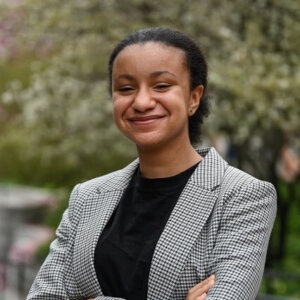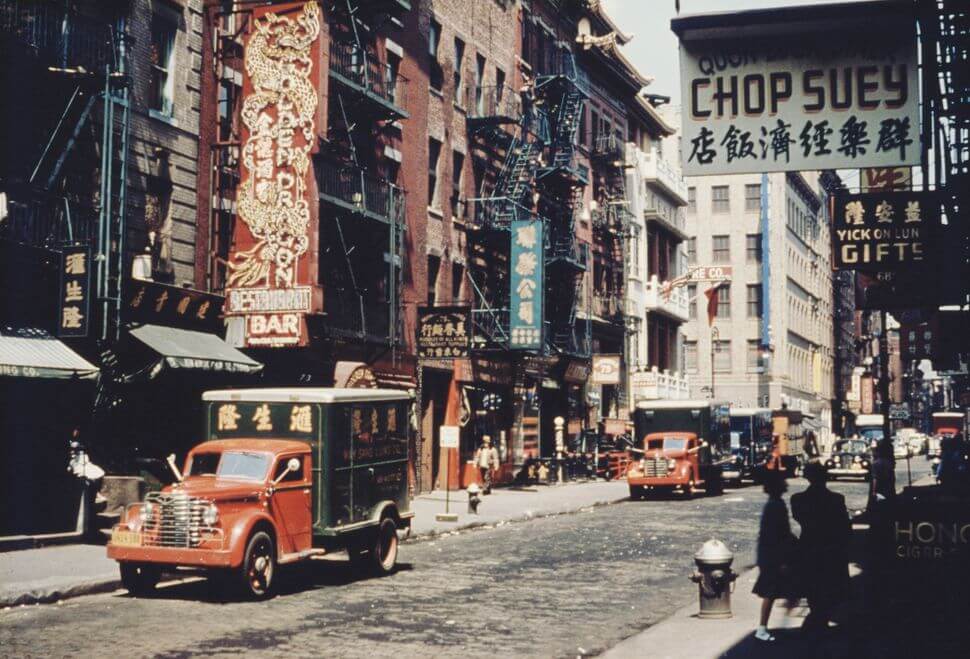At Grossinger’s in the Catskills, Jews learned how to be American
‘We Met at Grossinger’s’ provides an in-depth look at one of the Borscht Belt’s most famous resorts

Jennie Grossinger (center), with her daughter Elaine (left) and her mother Malka (right). Courtesy of Frank Publicity
Jewish resort culture in the Borscht Belt peaked in the mid-1950s when there were 538 hotels, 50,000 bungalows, and 1,000 boarding houses. Among the best known was Grossinger’s where Jewish singles mingled with the likes of Lucille Ball, Milton Berle and Elizabeth Taylor over the course of the resort’s more than seven-decade existence.
We Met at Grossinger’s, a documentary directed by Paula Eiselt (Under G-d, 93 Queen), explains how Grossinger’s became so successful despite the fact that its founder had only a sixth grade education. In 1900, at the age of 8, Jennie Grossinger immigrated with her family from Galicia, Austria to New York. She dropped out of school and began working as a buttonhole maker to help support her family, until her father became sick and they moved to the Catskills. Her father hoped to start a farm, but the family found the rocky land was better suited for a boarding house than crops. Jennie managed the inn while her mother oversaw the kitchen, and she eventually made enough money to purchase a larger building down the road.
The documentary features a range of interviewees, including Grossinger’s descendants, historians, and celebrities, such as Jackie Hoffman and Joel Grey, who frequented the resort. With its snappy editing and in-depth approach to the history of the culture, the film brings the past back to life and captures how the resort became ingrained in people’s personal lives.
Grossinger’s grandson Mitchell Etess estimates that thousands of couples met there. Hoffman says it’s where she had her first makeout session with a boy. Former employees say Grossinger’s elite guests motivated them to pursue better education and careers. Multiple interviewees say the resort was a home away from home.
Archival footage of people dancing, swimming, dining, and being entertained takes viewers back to the glitz and glamor of the Catskills in its heyday. Although Jewish resorts were founded in response to antisemitic exclusion at other places, the joy Jews were able to create for themselves diminishes the darkness of this bigotry.
The resorts gave Jews a place to escape antisemitism and be among people with a shared culture. For Holocaust survivors it provided the opportunity to connect with others who could understand their trauma. Jewish athletes like boxer Barney Ross (born David Rosofsky) relied on Grossinger’s as a place where they could train and get kosher food. Jews also got a crash course on assimilation, learning how to engage in American social activities like golfing and playing tennis without fear of judgment.
It wasn’t just Jews that fled to the Catskills. Bard College professor Myra Armstead’s grandparents moved there during the Great Migration and opened the Gratney M. Smith, a boarding house for Black workers and vacationers. Jackie Robinson was an invited guest at Grossinger’s and became friends with Jennie. The Jewish Vacation Guide, which pointed Jews to safe housing and dining in the area and around the country, inspired the Green Book, which provided the same functions for Black people.
But in the 1970s, when it became easier for Jews to vacation with non-Jews, the resorts became less of a necessity. Buildings in the city now had air conditioning, so people didn’t have to escape to the mountains for cooler weather. Teenagers and young adults began to prefer to spend their vacations with friends or doing activities that didn’t involve being attached at the hip to their parents or grandparents.
In 1987, a year after Grossinger’s closed, the lost culture it had once embodied was given renewed attention in Dirty Dancing. Although the film avoided explicit mentions of Judaism, the fictional Kellerman’s was based on Grossinger’s and the script was written by resort regular Eleanor Bergstein.
Now, younger generations are starting to take an interest in the Borscht Belt culture. The Marvelous Mrs. Maisel has exposed new audiences to this old form of Jewish vacation culture. Photographers Marisa Scheinfeld and Isaac Jeffreys have created photography collections of abandoned Catskill resorts. The Borscht Belt Museum teaches visitors about this bygone period.
But unlike fictional media and photos of the past, We Met at Grossinger’s offers firsthand accounts of life in the Catskills from those who lived it, adding a personal dimension to this new wave of Jewish nostalgia.
We Met at Grossinger’s will have its world premiere at DOC NYC on November 13, with subsequent screenings on November 16 and 19.
















